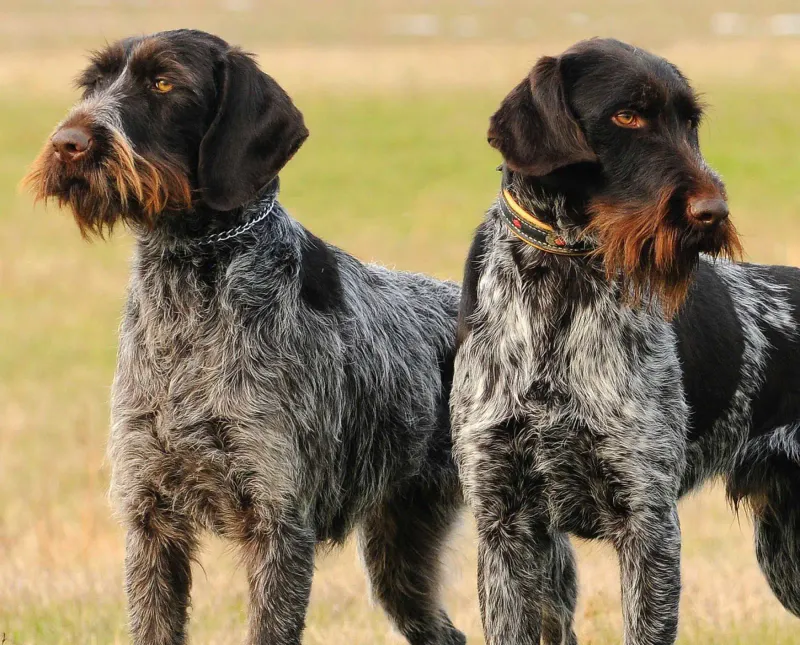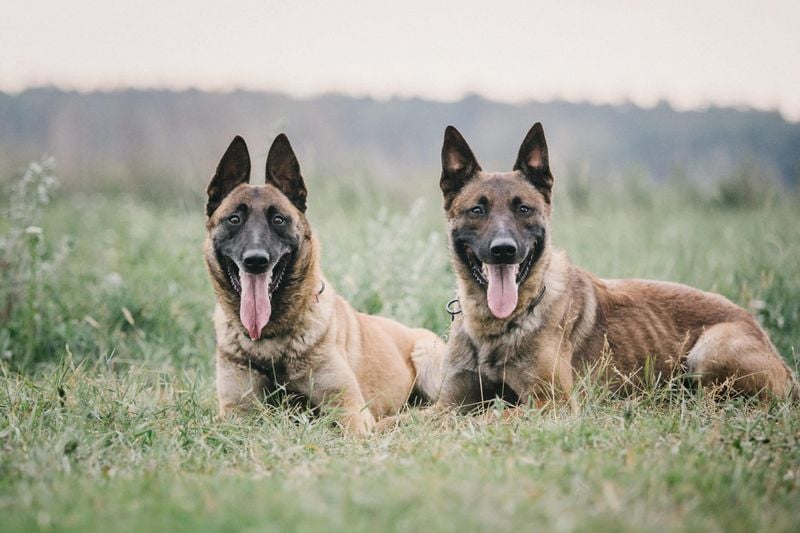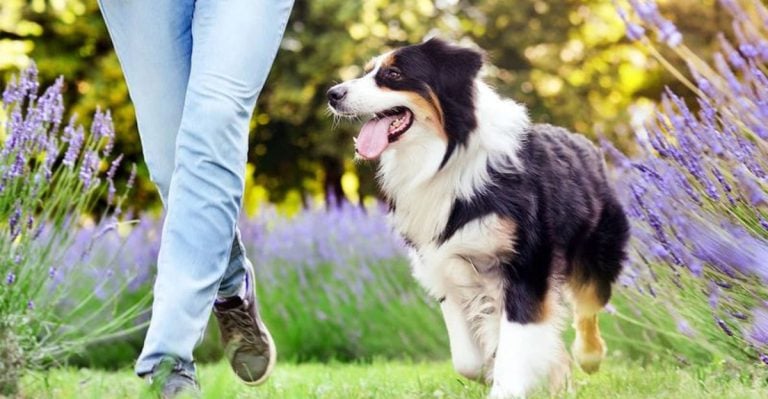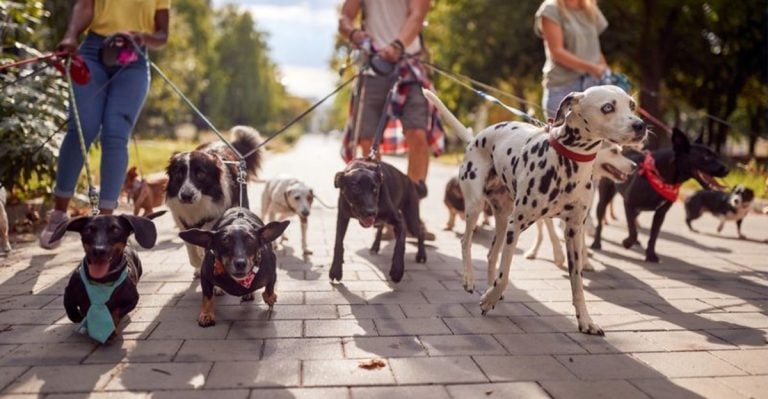Male or Female Dog? 15 Clues That Reveal the Better Fit for You
Choosing between a male or female dog is one of the first big decisions you’ll make as a future pet parent. While both can make wonderful companions, subtle differences between the sexes might make one a better match for your lifestyle.
Understanding these differences can help you find your perfect furry friend who’ll share your home and heart for years to come.
1. Size Matters: Physical Differences
Male dogs typically grow larger than their female counterparts of the same breed. This size difference can be significant in larger breeds – sometimes up to 20% difference in weight and height!
The physical size impacts everything from food costs to the space needed in your home and car. Smaller female dogs might be easier to handle for children or seniors with limited strength.
Consider your living situation carefully. A 100-pound male Great Dane needs more space than his 80-pound sister, while the size difference between male and female Chihuahuas might be barely noticeable.
2. Personality Puzzle: Temperament Tendencies
Female dogs often display more independence and calculated decision-making. They’re typically quicker to train but might occasionally exhibit stubbornness when they’ve made up their minds about something.
Males tend toward more consistent affection and playfulness throughout their lives. They’re often described as more happy-go-lucky, wearing their emotions plainly and being less prone to mood swings.
Remember that breed traits and individual personalities will always outweigh gender differences! A female Border Collie will likely be more energetic than a male Basset Hound, regardless of these general gender tendencies.
3. Growing Up: Maturity Timelines
Female dogs typically reach emotional maturity faster than males. By around 6 months, many females start showing more settled behavior patterns, while boys remain puppyish longer.
Male dogs, especially larger breeds, might maintain their playful, sometimes mischievous puppy behavior until 2-3 years of age. This extended puppyhood means more energy, more playtime, and sometimes more patience required from you!
For first-time dog owners, a female’s quicker maturation can make the initial training period less challenging. However, many owners cherish those extra months of puppy antics that male dogs bring to the household.
4. Learning Curve: Training Differences
Female dogs often excel at focused training sessions, showing impressive concentration and quick understanding of commands. They typically master house training faster, making those early months potentially less messy.
Males can be more food-motivated, which creates excellent training opportunities. However, they’re also more easily distracted, especially by interesting scents or potential playmates nearby.
The sweet spot for training males often comes through short, engaging sessions with immediate rewards. Females might benefit from slightly longer sessions that challenge their intelligence. Regardless of gender, consistency and positive reinforcement remain the keys to success.
5. King or Queen of the Castle: Dominance Behaviors
Male dogs frequently display more obvious dominance behaviors – marking territory, mounting, and sometimes challenging other dogs. This natural tendency stems from their wild ancestors’ pack structures.
Females can be equally dominant but often express it through subtler behaviors like controlling access to toys or sleeping spots. Their dominance typically appears more calculated and less physically demonstrative.
Home dynamics matter too! Males might be more likely to challenge existing pets for the top position in multi-dog households. Females, while sometimes less confrontational initially, can hold their ground firmly once they’ve established their place in the family hierarchy.
6. Awkward Moments: Mounting Behaviors
Mounting isn’t just about reproduction – it’s also about dominance, play, and sometimes stress relief. Male dogs, even neutered ones, typically display this behavior more frequently than females.
Female dogs do mount occasionally, particularly during play or when establishing social hierarchies. However, they generally do it less persistently and less intensely than their male counterparts.
Early training can help redirect this natural behavior into more appropriate activities. For some owners, especially those with young children or frequent visitors, the reduced likelihood of mounting behavior in females might be a deciding factor when choosing their perfect pup.
7. Cuddle Factor: Affection Styles
Male dogs often show their affection through constant physical contact – leaning against you, following from room to room, and seeking regular petting sessions. Their love style tends to be more obvious and demonstrative.
Females typically display more nuanced affection patterns, sometimes preferring quality over quantity in their interactions. They might be more selective about when they want attention but can form equally deep bonds.
Many owners describe males as “velcro dogs” who are always underfoot, while females might be nearby but maintaining some independence. Neither approach is better – it simply depends on whether you prefer a shadow or a companion who respects your personal space!
8. Cycle Considerations: Managing Heat Periods
Unspayed females experience heat cycles approximately twice yearly, lasting 2-4 weeks each time. During these periods, they’ll have bloody discharge that requires management through doggy diapers or restricted access to certain home areas.
Males can detect females in heat from remarkable distances and may become restless, escape-prone, or temporarily food-disinterested when they sense a female in season nearby. This biological drive is powerful, even in neutered males.
While spaying/neutering eliminates most of these concerns, timing matters. Many vets now recommend waiting until appropriate physical maturity before these procedures, meaning you’ll likely manage at least one heat cycle in females.
9. Medical Matters: Gender-Specific Health Issues
Males face potential health challenges including testicular cancer, prostate problems, and perianal hernias. They’re also more prone to certain orthopedic issues in some breeds due to their larger size and testosterone effects on growth.
Females may develop mammary tumors, pyometra (uterine infection), and ovarian complications if unspayed. Their slightly longer lifespans come with increased risk of certain age-related conditions.
Spaying/neutering significantly reduces many gender-specific health risks, though timing these procedures optimally remains debated among veterinarians. The good news: responsible breeding practices and regular veterinary care can help minimize health concerns regardless of which gender you choose.
10. Grooming Requirements: Coat and Cleaning Differences
Male dogs typically have thicker, coarser coats that shed more intensively during seasonal changes. Their larger size means more fur to manage and potentially more time spent grooming.
Females generally have slightly finer coats that may be easier to maintain. However, unspayed females experience coat changes during heat cycles and after giving birth that temporarily increase shedding.
The cleaning factor matters too! Male dogs tend to be messier eaters and drinkers, often leaving trails of water from their jowls. They’re also more likely to roll in unpleasant substances outdoors, while females typically (though not always) show greater concern for personal cleanliness.
11. Conflict Resolution: Aggression Patterns
Males typically display more overt aggression, especially toward other male dogs. Their confrontations tend to be louder and more immediate but often resolve quickly without lasting grudges.
Females can be more calculating in their conflicts, sometimes holding grudges longer after disagreements. While they may have fewer confrontations overall, those that do occur might require more careful management to fully resolve.
Early socialization dramatically reduces aggression in both genders. Proper introduction techniques and understanding body language help prevent conflicts regardless of gender. Remember that breed tendencies and individual personality have far greater impact on aggression than gender alone.
12. Playground Politics: Social Dynamics with Other Dogs
Male dogs typically greet new canine friends with direct approaches – sniffing, play bowing, and immediate invitations to roughhouse. They often establish relationships quickly but can clash with other males over status.
Females tend toward more complex social interactions, observing before engaging and being more selective about playmates. They’re generally more diplomatic in group settings but can form stronger negative opinions about dogs they dislike.
The ideal dog park mix often includes both genders. Mixed-gender playgroups typically experience fewer serious conflicts than same-gender groups. If you already have a dog, adding one of the opposite sex usually creates smoother household dynamics.
13. Guardian Angels: Protective Tendencies
Male dogs often display more obvious protective behaviors – barking at perceived threats and positioning themselves between family members and strangers. Their larger size can also serve as a visual deterrent.
Females typically show more discriminating protection, carefully assessing situations before reacting. Their protective instincts become especially pronounced when children are present, earning them a reputation as exceptional family guardians.
Both genders can be equally protective, just in different ways. Males might guard the entire property perimeter, while females often focus on protecting specific family members. Neither approach is inherently better – it depends on what type of protection matters most to your household.
14. Golden Years: Lifespan Considerations
Female dogs typically enjoy slightly longer lifespans than males of the same breed – sometimes by 6 months to a year on average. This slight advantage exists across most breeds and mixed-heritage dogs.
Males may face higher risks of certain accidents and injuries due to their more adventurous tendencies and territorial behaviors. Their slightly larger size in many breeds can also contribute to earlier onset of age-related conditions.
The good news? The difference is minimal compared to factors like responsible breeding, proper nutrition, regular exercise, and preventative veterinary care. These elements impact longevity far more significantly than gender alone, giving dedicated owners substantial control over their pet’s healthy years.
15. Recovery Road: Spay/Neuter Healing Processes
Neutering males is generally a less invasive procedure than spaying females. The surgery involves smaller incisions, shorter anesthesia time, and typically quicker recovery – often just 2-3 days before normal activity resumes.
Spaying females requires abdominal surgery with longer incisions and recovery periods, usually 7-10 days of restricted activity. The procedure costs more due to its complexity and longer surgical and anesthesia time.
Recovery temperament differs too! Males often bounce back quickly, sometimes making it challenging to enforce needed rest. Females typically accept recovery restrictions more readily but may require more pain management. Budget both time and money accordingly when planning these important procedures.





















